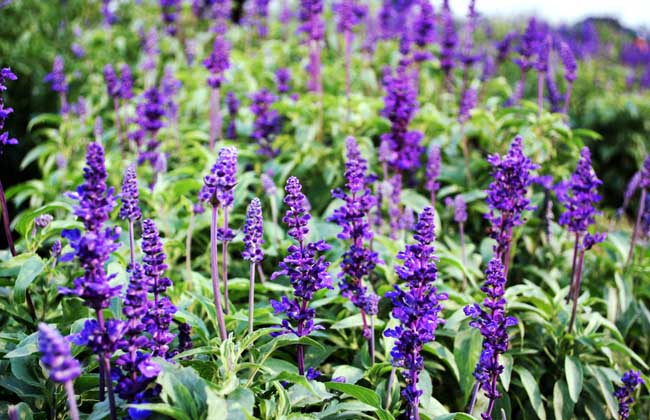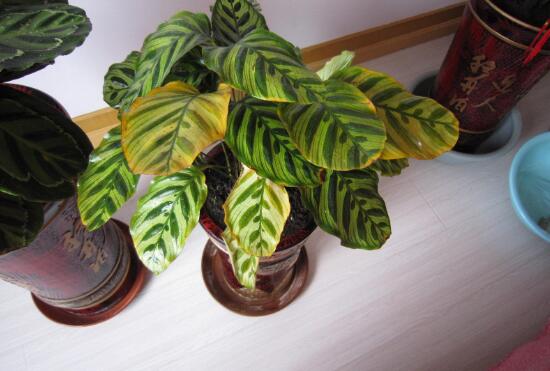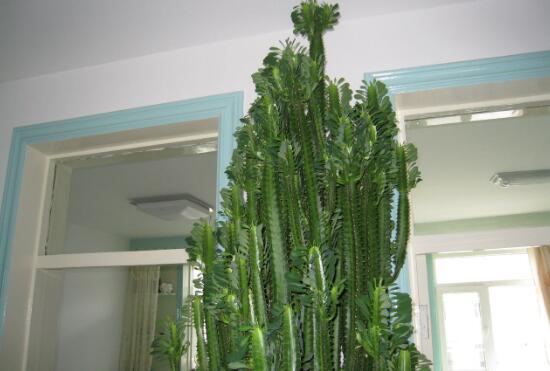How does lavender reproduce?
Lavender is a kind of flower that everyone likes. The home decorated with lavender is romantic and romantic, and it is also a kind of flower with a wide range of uses. I believe everyone wants to plant a few pots at home. Propagation mainly includes sowing, cutting, striping, root division and other methods. Cutting is mainly used in production. Let's take a look at the breeding methods of lavender.
Ramet propagation of lavender
The ramet propagation of lavender can be carried out in spring and autumn. 3-4-year-old plants are used and separated by adult roots from March to April in spring, with bud eyes on each branch.

Sowing and propagation of lavender
1. Seed collection: lavender blossoms in April and can be harvested after the seeds are ripe from June to July. After the spikes of lavender are collected, they are spread indoors or in a greenhouse with thin film. Do not pile up too thick and dry naturally. After about 10 days, when the pedicel and exocarp are brittle, rubbed and blown, the nutlets and impurities can be separated. French lavender nuts need to be further air-dried. When its water content is reduced to 12-15%, it can be put away in a ventilated and cool place.
2. Sowing method: lavender is suitable for spring sowing (March-May) and autumn sowing (September-October). It is better to use a special sowing medium when sowing, or it can be prepared with peat and a small amount of perlite. Install the medium in a seedling tray, smooth it, spray a small amount of water and then sow, strip sow or sow, sow about 10 seeds per square decimeter, cover with a thin layer of coconut bran or vermiculite after sowing, and spray water again. In the future, depending on the dry and wet medium, spray water properly.
3. Post-sowing management: lavender seeds can be unearthed about a week after sowing, and their seedlings have strong disease resistance. After being unearthed, they can be sprayed 800 times as much as carbendazim every two weeks to prevent disease, requiring certain light and nutrients, otherwise they are easy to grow and form slender seedlings. When lavender grows to 4-6 true leaves, it can be transplanted once to facilitate the distribution of side branches, and the seedlings can be planted in autumn and spring. The spring sowing seedlings can be planted after 50-60 days. How to propagate lavender by cutting and the method of cutting propagation of lavender
Lavender is a kind of flower with beautiful color. Lavender can be cultivated not only as an ornamental plant, but also as a medicinal material. Lavender has good growth habits and is easy to reproduce. Lavender sowing propagation can also be cuttage propagation, today we will learn how lavender cutting propagation, lavender cutting propagation methods.
How to propagate lavender by cutting and the method of cutting propagation of lavender
1. Selection of lavender cuttings
It is better to grow the upper lignified branches in the same year. The length of the cuttings is 812 cm. It is better to cut the lower end of the cuttings into an inclined plane and leave 6-8 leaves in the upper part of the cuttings, which is beneficial to keep the nutrients and accelerate the healing and rooting of the cuttings.
Second, cutting time of lavender
It is better before the soil is frozen. Dalian area is usually from late November to early December.
Third, the cutting method of lavender
Using small flat border cutting, the width of the border is 1m, the row spacing is 5~8cm, the depth of cuttings is 1/3 of the length of cuttings, and 3-4 pairs of true leaves are exposed on the ground.
Lavender field management
After lavender cutting, the border is covered with plastic film, and the edge of the plastic film does not need to press the soil, so that the film can be opened regularly and ventilated at intervals of 5 to 6 days. Watering, after cutting in autumn, irrigate once, so that the cuttings are closely combined with the soil. It can be irrigated every 15-20 days or so. In the next spring, with the increase of temperature and large evaporation, irrigation management began to avoid drought, which is the key period for plant healing and rooting. Watering at the seedling stage should not flood the seedlings, do not accumulate water, and the leaves do not stick to silt, otherwise it will cause the seedlings to suffocate and die. If the soil is loosened by ploughing, the temperature is low in early spring and the ground temperature rises slowly, so we should loosen the soil in time, weed and increase the soil temperature, so as to facilitate cuttings to heal and take root and cultivate strong seedlings. Loosen the soil to avoid hurting seedlings, from shallow to deep, do not loosen the cuttings, affecting survival.
In April of the following year, the temperature rebounded, lavender seedlings grew faster, water can be properly controlled to avoid overgrowth. After gradually refining the seedlings, they can be transplanted and planted in the open field in the middle of April.
Lavender how to cuttage propagation, lavender cuttage propagation methods for you to introduce here. Lavender is heat-resistant, drought-resistant and cold-resistant, so it is a good cultivated flower. Lavender also likes the sun and needs plenty of light to grow well. Lavender is afraid of dampness, it is necessary to avoid pots without stagnant water, to avoid causing rotten roots.
How to select seeds and propagate lavender
Environmental conditions for the growth of lavender
Soil
Lavender is loose and fertile. Humus-rich soil, ph 7-8.5 is the most suitable for lavender like sunny, cool and well-ventilated environment, avoid hot and humid.
Temperature
It can grow at 15: 25 ℃ and at 5: 30 ℃. The growth stopped above 35 ℃, and the top stems and leaves were withered and yellow above 38-40 ℃ for a long time. In northern China, dormancy begins when it is below 0 ℃ for a long time in winter, and the seedlings can tolerate a low temperature of-20 ℃ per square meter during dormancy.
How to select seeds and propagate lavender
1, lavender cross-pollination, a variety of miscellaneous, a total of 28 species at present.
2. Lavender can be sown, cut and striped. Root-splitting propagation is generally dominated by sowing and cutting.
3. Lavender is sown and propagated, and the conventional sowing time is from March to June or September to October. Lavender seeds are small and have a long dormancy period. Soak the seeds for 12 hours before sowing, and then soak the seeds with 20-50mg/kg gibberellin for 2 hours before sowing.
4. Pay attention to spraying water at the seedling stage. When the seedling is too dense, it can be suitable for the seedling, and go to the pot when the seedling height is about 10cm.
5. Select the well-developed mother plant, cut the one-and-a-half-lignified branches from the mother plant, remove the tip, grow 5~6cm, insert water for 2 hours, then insert into the prepared culture soil, insert deep 1~2cm, and pour water thoroughly.
6, pay attention to shading with a shading net with a light transmittance of more than 80%, often keep the basin soil moist, take root about 2-3 weeks after planting, shade with a shading net with 50% light transmittance until autumn cool, and put on the basin one month after insertion.
- Prev

How do peacock bamboo taro leaves turn yellow? controlling watering, proper fertilization / light is the key.
As a beautiful foliage plant, the beauty of peacock taro is mainly reflected in its leaves, so when its leaves turn yellow, its ornamental will decline sharply. At that time, the flower friends must be in a hurry. What if the peacock taro leaves turn yellow? In this regard, the editor summarized the reasons for the yellowing of the leaves of six kinds of peacock bamboo taro.
- Next

How do the keel flowers be watered? how long does it take to water the keel? if it doesn't dry, it will be thoroughly watered.
For the dragon bone flower, friends who have seen it should be impressed. It has a strange shape, like a straight growth ruler. It looks very beautiful. However, if you want the keel flower to look good, some maintenance skills must be mastered, such as watering is very important, then how to water the keel flower? How long does it take to water the keel?
Related
- Fuxing push coffee new agricultural production and marketing class: lack of small-scale processing plants
- Jujube rice field leisure farm deep ploughing Yilan for five years to create a space for organic food and play
- Nongyu Farm-A trial of organic papaya for brave women with advanced technology
- Four points for attention in the prevention and control of diseases and insect pests of edible fungi
- How to add nutrient solution to Edible Fungi
- Is there any good way to control edible fungus mites?
- Open Inoculation Technology of Edible Fungi
- Is there any clever way to use fertilizer for edible fungus in winter?
- What agents are used to kill the pathogens of edible fungi in the mushroom shed?
- Rapid drying of Edible Fungi

